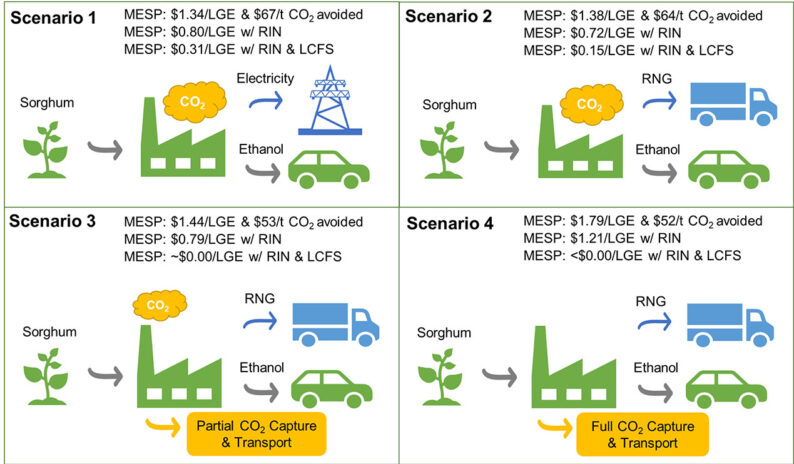The Science
Biofuel production and usage already reduce CO2 greenhouse gas emissions by about 80%, compared to traditional refineries, but can these emissions be further reduced, and, at what cost? When biorefineries process raw plant matter to be made into biofuels, a natural byproduct of this process is biogas, specifically CO2. This gas is usually burned by the processing plant to make electricity that powers the plant, thus preventing the majority of it from being released into the atmosphere. Scientists at JBEI have examined the economic impact and environmental value of capturing and upgrading this underutilized biogas into biomethane for use as a fuel.
The Impact
The results suggest that the monetary cost of generating ethanol could be adventageous, while also significantly reducing CO2 release into the atmosphere by about half. The costs may also be potentially further reduced depending upon the environmental policy incentives of the area for which the facility is located. The research shows that Our analysis suggests that even with current technologies,
Summary
The mission of the Joint BioEnergy Institute (JBEI) is to develop advanced biofuels and bioproducts from carbon stored in plant biomass that can serve as a replacement for gasoline, diesel, jet fuels, and petrochemically derived commodity chemicals. Presuming the ultimate goal of making biofue isl to reduce greenhouse gas emissions, the cost and emissions of four different scenarios, utilizing sorghum as the starting biomass, were simulated:
- The current method of using the CO2 byproduct to power the facility, with some CO2 being released into the atmosphere after burning
- Upgrading a portion of the byproduct biogas to renewable natural gas (RNG), and releasing some of the leftover CO2 into the atmosphere after burning
- Upgrading all portions of the byproduct biogas to renewable natural gas (RNG), and releasing some of the leftover CO2 into the atmosphere after burning
- Upgrading all portions of the byproduct biogas to renewable natural gas (RNG), and instead releasing some of the leftover CO2 into the atmosphere after burning, upgrading this CO2 as well, with very little CO2 being released into the atmosphere.
The costs mitigating one tonne of CO2 were calculated for each of the above scenarios based on two different potential costs for ethanol production (as opposed to retail costs):
- $2.50/gal USD – the target cost for bioethanol: a) $143 b) $131 c) $99 d) $78
- $1.53/gal USD – the historical average for fossil fuel ethanol production: a) $67 b) $64 c) $53 d) $52
This article is a plain language summary of the research paper:
Yang M., Baral N.R., Anastasopoulou A., Breunig, Scown C.D. (2020) “Cost and Life-Cycle Greenhouse Gas Implications of Integrating Biogas Upgrading and Carbon Capture Technologies in Cellulosic Biorefineries.” Env Science & Technology. doi: 10.1021/acs.est.0c02816
